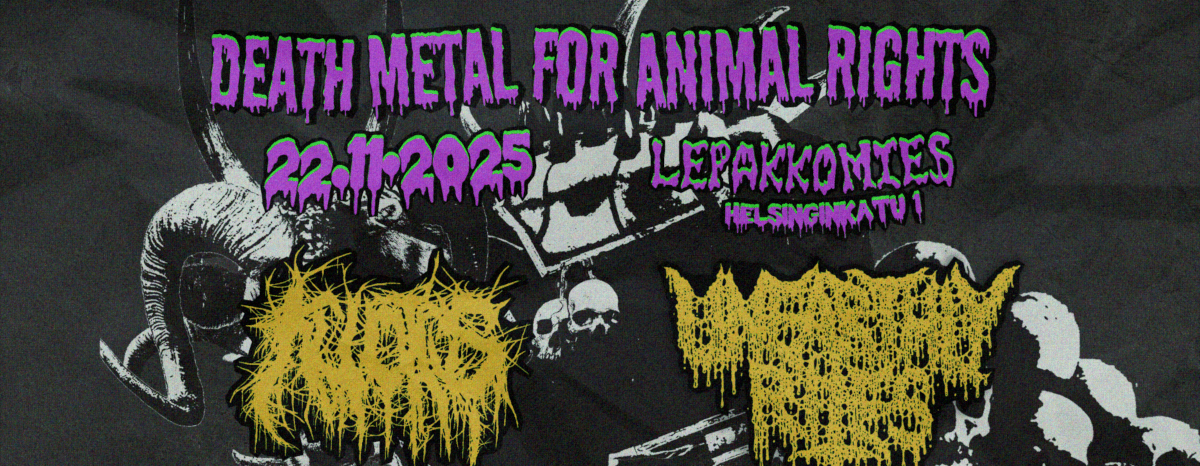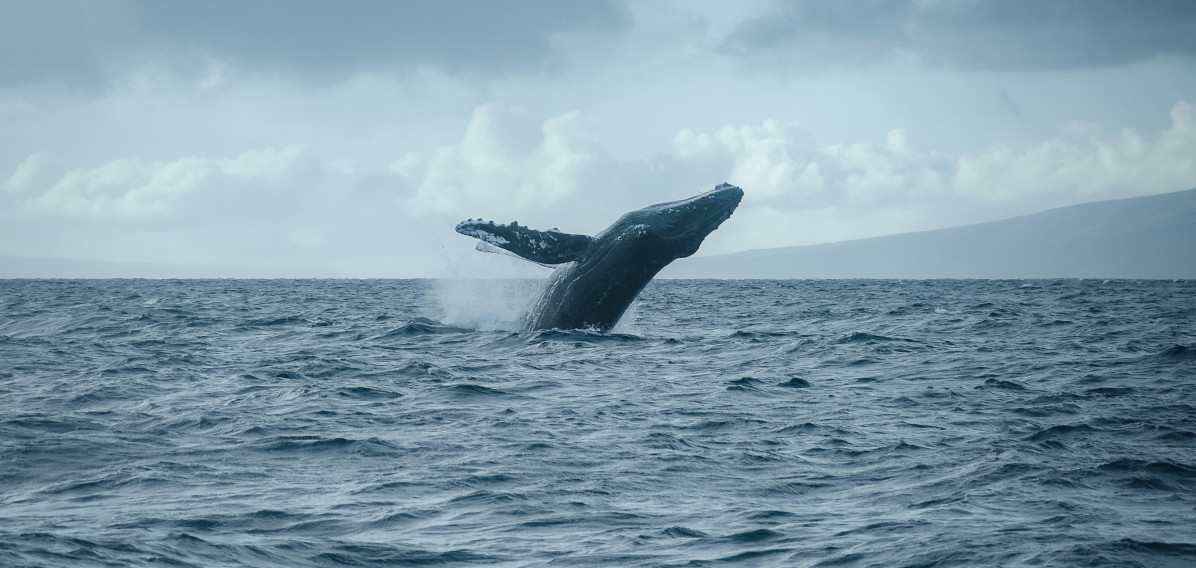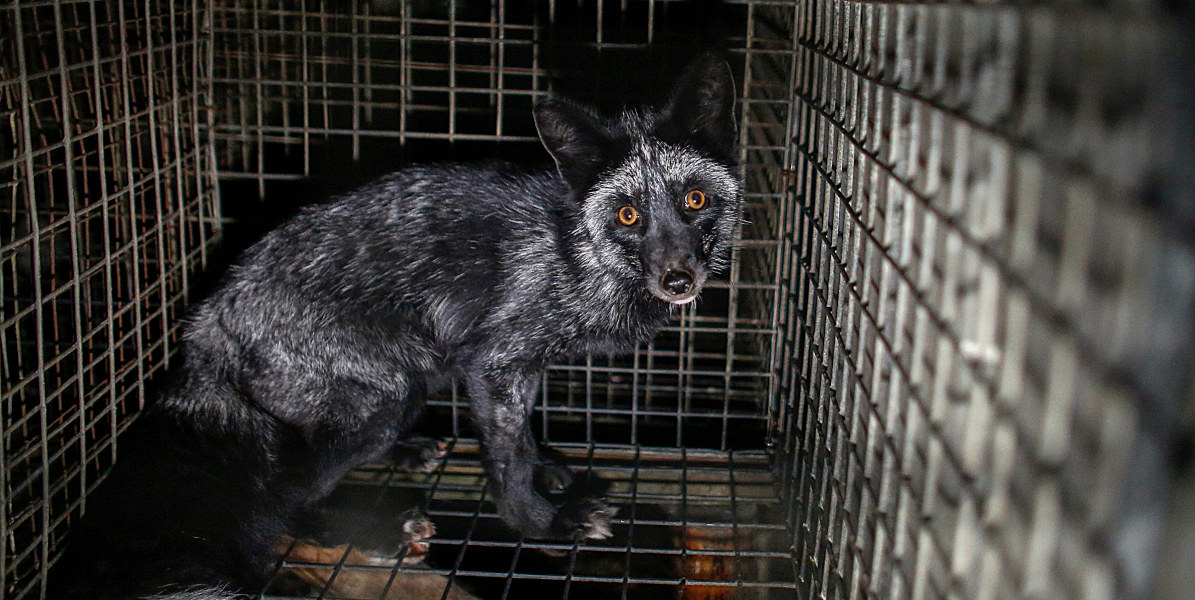Rainbow trout is the most common fish farmed for human consumption in Finland. What does a fish raised for food experience before slaughter?
It is difficult to find information on what fish farmed for food experience before slaughter. Some information is available on the early stages of rainbow trout farming, as an example, but information on the conditions during the latter stages and what the fish experience before slaughter are ignored in consumer-focused information. What are we not being told, and how big is this phenomenon?
Millions of rainbow trouts
In 2016, the total fish production for food in Finland amounted to approximately 14.4 million kilograms of fish, of which over 90% was rainbow trout. Finns consume about 6.6 million kilograms of locally produced rainbow trout every year. The usual slaughter weight of a rainbow trout is around two kilograms, so this weight translates to approximately 3.3 million individual fishes. This is however a rather conservative estimate, because some rainbow trouts are slaughtered at one kilogram.
In 2016, there were 158 fish farms rearing fish for food in Finland. On these farms, the fish are reared in large cages or other enclosures, also known as rearing units, and the stocking density of fish is very high.
Years in confinement
The rainbow trout is described as a hardy species so it has to endure many kinds of conditions and handling. There are no limits to stocking density in fish farming because determining such limits is regarded too difficult. The amount of fish varies from one rearing unit to another also because the definition of stocking density itself depends on factors such as fish species, rearing method, life phase, water temperature, and environmental conditions.
Rainbow trout farmed for food are reared for two to three years. During their first year, the juvenile fish are transported from rearing tanks to grow-out facilities where they live a long and crowded life. Rainbow trout are not small: a nine-month-old fish can measure 30 to 40 centimetres.
According to one source, the average stocking density for rainbow trout is 30 kilograms per cubic metre. This means that there are 15 fishes weighing two kilograms each in one cubic metre. In other words, an individual fish swims around in seven buckets of water. There are also higher estimates of up to 50 kilograms per cubic metre, which is equivalent to 25 fishes crammed into one cubic metre.
Poor conditions resulting in welfare problems
Professor Outi Vainio is an expert in pain as experienced by animals. According to her, the environment farmed fish live in may in some cases force the fish to swim in one direction their whole lives. As a consequence, the fins that are the closest to the side of the tank or cage will erode. She regards one-sided fin damage as an example of degraded welfare and possible stress.
Adult rainbow trouts prefer to live alone, but the tightly packed fish farms by nature prevent these trouts from living in conditions appropriate to their species. The high density of animals makes the fish susceptible to stress, disease and physical harm, and more likely to exhibit stereotypical distress behaviour. Their environment also contains very little stimuli. The fish are fed pelleted dry food, for example, and cannot hunt for themselves.
Additional welfare problems include high water temperature and low oxygen content of the water. Particularly during heatwaves, the fish may suffer from a lack of oxygen. Fish need more oxygen when the temperature rises, but at higher temperatures, the water they live in also contains less oxygen. Unlike in the wild, fish living on fish farms cannot travel to more temperate surroundings when needed. Parasites and other pathogens are also more common in warm water.
The procedures rainbow trout go through in the lead up to slaughter also cause them stress. For example, it is common to stop feeding the fish several days before slaughter. Fasting the fish is justified as necessary for hygiene reasons, however many experts have noted that the fasting period should not exceed 72 hours. This is sufficient time to empty their bowels, while a longer fasting period risks their welfare. In Finland, however, the minimum fasting period for rainbow trout is six days.
You can read more about other procedures involving fish in the article “Fasting, capturing, stunning – what do fish experience before death?” (link will open in the same tab).
Gasping for air for six minutes
Carbon-dioxide stunning is the most common method used to stun rainbow trout in Finland, which makes the fish feel like they are choking. This is a slow, painful, and distressing experience that causes stress, exhibited in strong escape reflexes and violent shaking of the head and tail.
It can take up to six minutes for a rainbow trout to lose consciousness in water saturated with carbon dioxide. However, it can take some species of fish even longer: some types of salmon have been observed shaking their heads and tails for as long as nine minutes.
These strong movements exhibited by fish during stunning may cause their gills to bleed. Increased mucus production, which is considered a sign of stress, has also been observed. Fish have also been known to cough up slime from their gills.
As the oxygen slowly runs out, the fish try to gulp air from the surface and become fatigued. Finally, the carbon dioxide immobilises the fish, but does not necessarily stun them. While recommendations state that the fish should be left in the stunning tank for ten minutes to ensure they have lost consciousness and are no longer sensitive to pain. In practice, however, the fish are transferred to the gutting line two to three minutes after they have stopped moving. This entails a risk that the fish are bled while still conscious.
The presence of significant rigor mortis provides further evidence that the procedures before and during slaughter are stressful for rainbow trout. This in turn lowers the quality of the meat from the point of view of anyone selling fish to consumers.
The right to a humane death
The negative environmental impact of fish farming has been widely discussed and studied. We hope that similar attention will be paid to the farming and slaughter processes, which are problematic in terms of fish welfare. This sector actively welcomes innovations that could enhance profitability, but there is not enough work going into understanding and reducing the suffering caused by different stunning methods.
Advancing technology opens up opportunities for further research into what fish experience. There is a need for regulations on stocking density and stunning methods, and animal welfare should be the primary concern. Carbon dioxide stunning must be banned. Electrical and mechanical stunning, by contrast, lead to a complete loss of consciousness within a second. Further research on the merits of alternative stunning methods is required.
Carbon dioxide stunning is cheap but ultimately unethical. The World Organisation for Animal Health (OIE) has examined the welfare problems associated with carbon dioxide stunning and recommends that this method is abandoned.
Translation: Johanna Koskinen.
Pictures: Flickr / Jason Ippolito CC BY 2.0.
References (each link will open in a new tab)
Eläinten hyvinvointikeskus: Eläintenpito Suomessa (in Finnish, pdf).
Euroopan unionin neuvosto: Komission kertomus Euroopan parlamentille ja neuvostolle mahdollisuudesta ottaa käyttöön tiettyjä vaatimuksia, jotka koskevat kalojen suojelua lopetuksen yhteydessä (in Finnish, pdf).
Euroopan komissio: Kirjolohi (in Finnish, pdf).
Fishfarm Project: Handbook on European Fish Farming (e-magazine).
Food and Agriculture Organization of the United Nations: Fisheries and Aquaculture Department. Oncorhynchus mykiss.
Food and Agriculture Organization of the United Nations: Fisheries and Aquaculture Department. Small-scale rainbow trout farming.
Ilmasto-opas: Ilmastonmuutos tuo kalankasvatukselle haasteita Suomessa (in Finnish).
Lapin kalatalouskeskus: Kirjolohi (in Finnish).
Luonnonvarakeskus: Vesiviljelytilasto 2016 (in Finnish).
Ruokavirasto: Viljeltävät kalat (in Finnish).
Ruokavirasto: Tuotantoeläinten hyvinvoinnin neuvottelukunnan kokous (in Finnish, pdf).
Suomen kalankasvattajaliitto ry: Kalanviljely (in Finnish, pdf).
Ympäristöministeriö: Kalankasvatuksen ympäristönsuojeluohje (in Finnish, pdf).
Niinimäki, Juhani. 2015. Vesiviljely; kalat, äyriäiset, nilviäiset, levät. Books on Demand.






